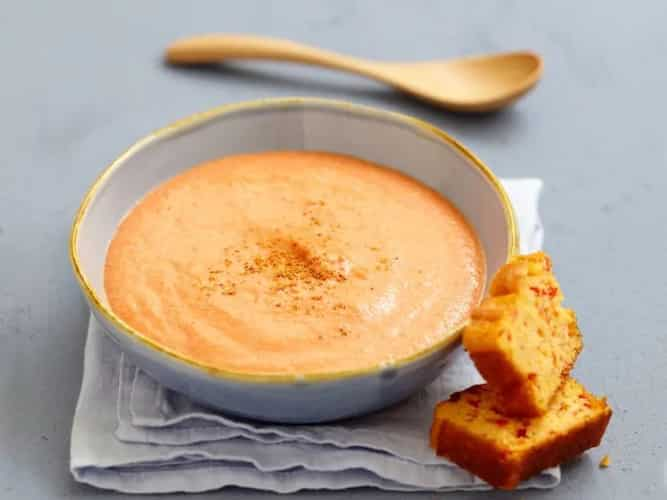Velouté (pronounced "vuh-loo-TAY") is one of classical French cuisine's five mother sauces, along with bechamel, espagnole, hollandaise, and tomato. This implies that velouté can serve as a base for a variety of sauces. It's like a blank colouring book that you may colour whatever you want. This is not to say that velouté isn't wonderful on its own; rather, its flavour is heightened and increased by the addition of other ingredients.
Knowing how to produce a decent velouté is essential for saucing a variety of foods. Our simple recipe will provide you with the tools you need to extend and experiment with this foundation sauce, determining which herbs, finishing touches, or additives you prefer. From velouté, you may make Allemande sauce with eggs and cream, as well as the famous suprême sauce with cream, butter, and lemon juice. Many additional creamy sauces are derived from velouté, and their ingredients vary from herbs, wine, shallots, or meat drippings, similar to gravy.
Velouté, like béchamel, is a white sauce that is thickened with roux, a butter and flour mixture. Unlike béchamel, which is produced with milk, velouté is created using stock. There are three forms of white stock: chicken, veal, and fish, and there are three types of velouté: chicken, veal, and fish. Velouté is frequently served with chicken or fish; fish velouté is equally tasty and clearly produced with fish stock, but veal velouté is made with veal stock.

Ingredients
• 2 ½ of chicken stock, plus additional amounts as necessary
• 2 tbsp clarified butter
• 3 tbsp all-purpose flour
Method
1. Assemble the components.
2. In a medium saucepan, boil the chicken stock. To keep the stock hot, turn down the heat.
3. Melt the clarified butter in a different heavy-bottomed pot over medium heat until foamy. As velouté needs to be off-white in colour, take care not to allow it to turn brown. The sauce will become darker as the butter turns brown.
4. Stir the flour into the melted butter with a wooden spoon, a little at a time, until it is thoroughly combined. A roux is a name for the resulting paste, which has a light yellow hue.
5. The roux should be heated for an additional few minutes, or until it turns a light blond colour. This aids in removing the flavour of uncooked flour. Avoid allowing the mixture to turn brown since a pale sauce is necessary, just as clarified butter must be kept white.
6. The hot chicken stock should be added to the roux gradually while being briskly whisked to prevent lumps. While continuing to whisk, add the stock.
7. As the sauce simmers for about 30 minutes, adjusting heat as required, or until the total volume has fallen by about half, stir continuously to avoid lump formation or burning at the bottom of the pan. Use a ladle to scoop up any sediment or impurities that may float to the surface.
8. The sauce has to be silky and smooth. Until the sauce has reached the ideal thickness to coat the back of a spoon, if it is too thick, add a little more stock and whisk. For this method to work, the sauce must have enough viscosity to coat the back of the spoon without dripping off.
9. Remove the sauce from the heat as soon as the back of a spoon can be coated in it. To give the sauce an extra-smooth texture, carefully pour it through a wire mesh strainer lined with cheesecloth.
10. When you're not going to use the velouté, keep it covered.


